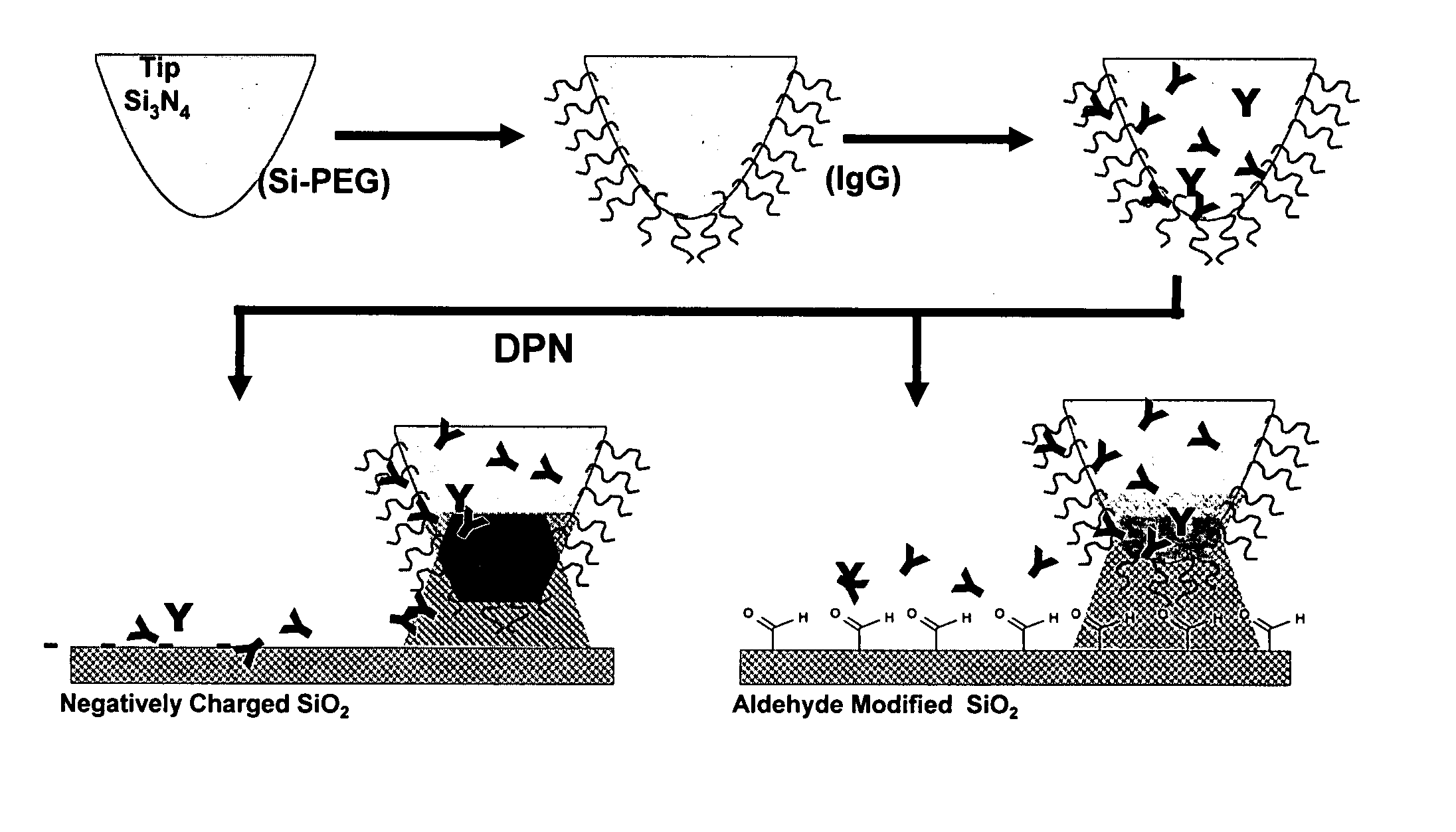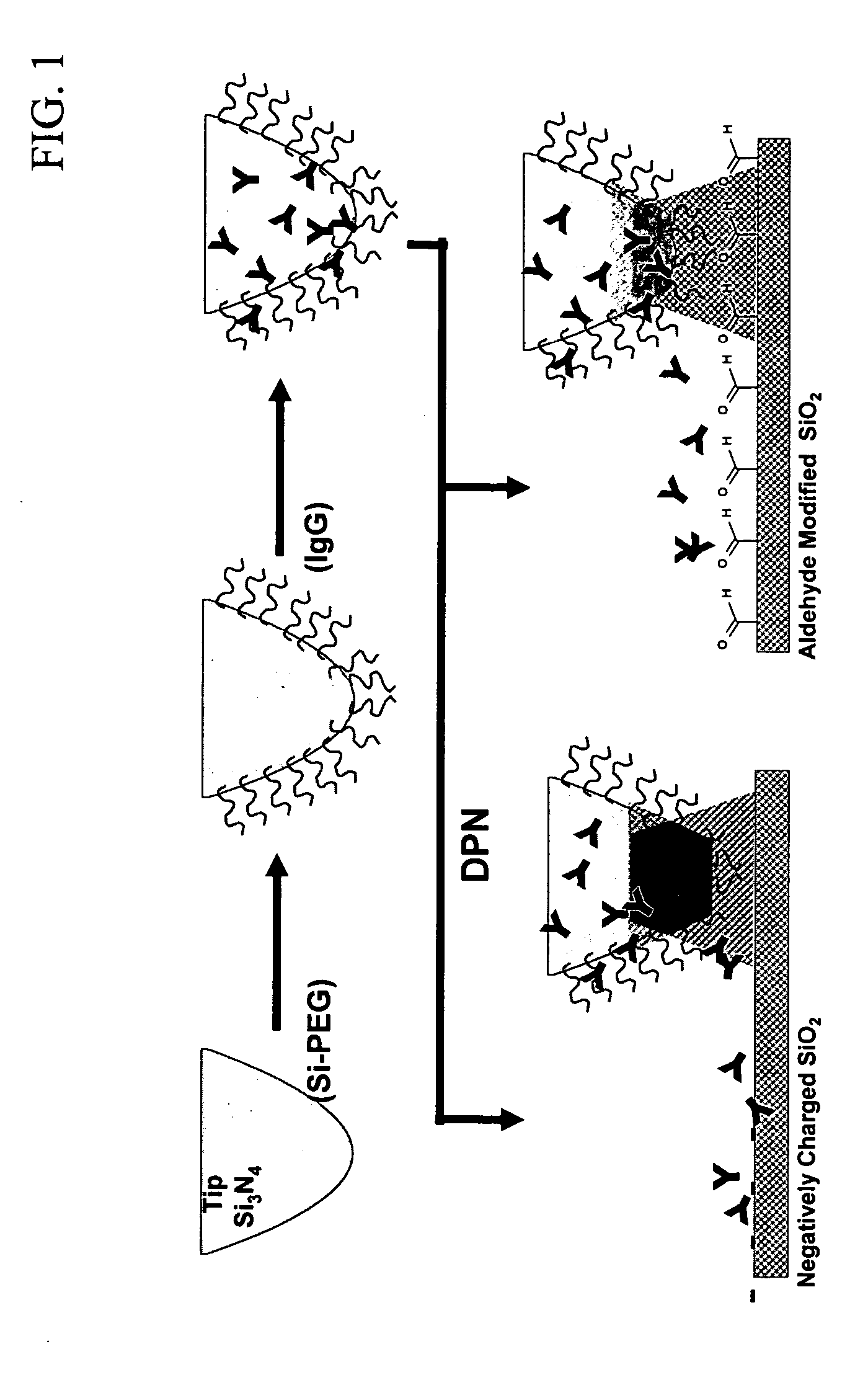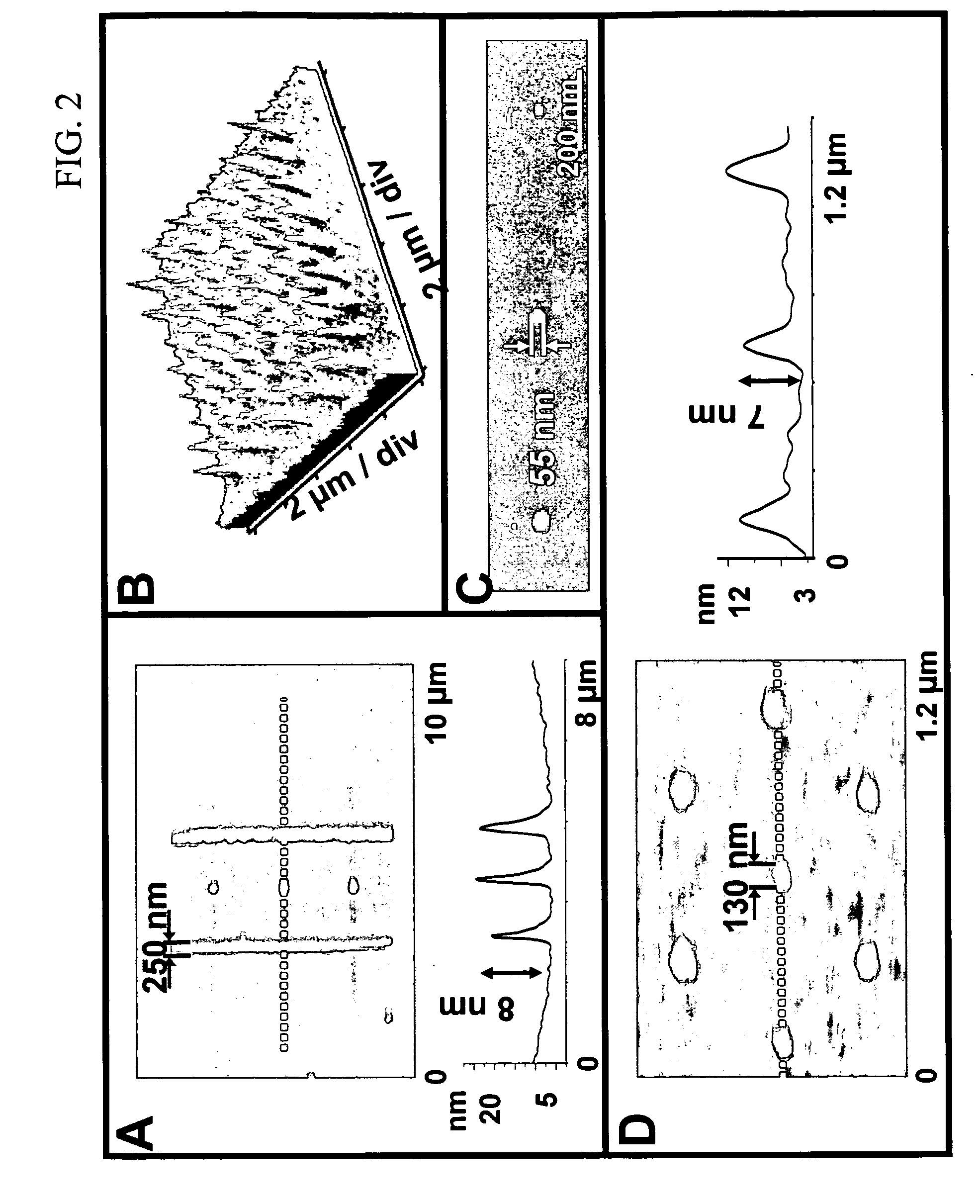Peptide and protein arrays and direct-write lithographic printing of peptides and proteins
a peptide and protein array technology, applied in the direction of scanning probe techniques, printers, instruments, etc., can solve the problems of direct-write patterning or printing methods that cannot can not meet the needs of customers, so as to improve the deposition of selected natural peptide patterning compounds, and improve the deposition of selected protein patterning compounds
- Summary
- Abstract
- Description
- Claims
- Application Information
AI Technical Summary
Benefits of technology
Problems solved by technology
Method used
Image
Examples
working examples
Example 1
The approach used herein (FIG. 1) relied on modification of an AFM tip with 2-[methoxypoly(ethyleneoxy)propyl]trimethoxysilane (Si-PEG), which forms a biocompatible and hydrophilic surface layer, which inhibits protein adsorption and, therefore, reduces the activation energy required for protein transport from tip to surface. The molecular weight of Si-PEG is about 460-490 g / mol and the average number of ethylene glycol units is about 6-9 (obtained from HPLC measurements). In the absence of this tip coating, the protein inking solutions (e.g., 500 micrograms / mL in PBS buffer at pH 7.3) may not in some cases wet the untreated silicon nitride cantilevers. Hence, untreated cantilevers can result in some cases in inconsistent, or low-density, protein patterns.
In addition to cantilever modification, two additional strategies have been developed to facilitate ink transport and nanostructure formation (FIG. 1). Both involve silicon oxide surfaces, one having a negatively charg...
example 2
An additional tip modification strategy coupled with direct-write nanolithography was provided for depositing proteins and peptide on a surface to form protein and peptide nanostructures. This methodology further offers patterning capabilities on the 45 nm to many micrometer length scale. The bio-recognition properties of nanofeatures composed of immunoglobulin-gamma (IgG) were confirmed by reacting the array with gold nanoparticles coated with anti-IgG. Furthermore, a two component nanoarray was fabricated in direct-write fashion by direct-write printing, and the bio-recognition properties of this structure were invested by atomic force microscopy (AFM) without biodiagnostic labels.
In order to direct-write protein nanoarrays, commercially available AFM tips (ThermoMicroscopes sharpened Si3N4 Microlever A, force constant=0.05 N / m) were chemically modified. The modification procedure involved immersing the gold-coated cantilever in a 1 mM ethanolic solution of a symmetric 11-merca...
PUM
 Login to View More
Login to View More Abstract
Description
Claims
Application Information
 Login to View More
Login to View More - R&D
- Intellectual Property
- Life Sciences
- Materials
- Tech Scout
- Unparalleled Data Quality
- Higher Quality Content
- 60% Fewer Hallucinations
Browse by: Latest US Patents, China's latest patents, Technical Efficacy Thesaurus, Application Domain, Technology Topic, Popular Technical Reports.
© 2025 PatSnap. All rights reserved.Legal|Privacy policy|Modern Slavery Act Transparency Statement|Sitemap|About US| Contact US: help@patsnap.com



